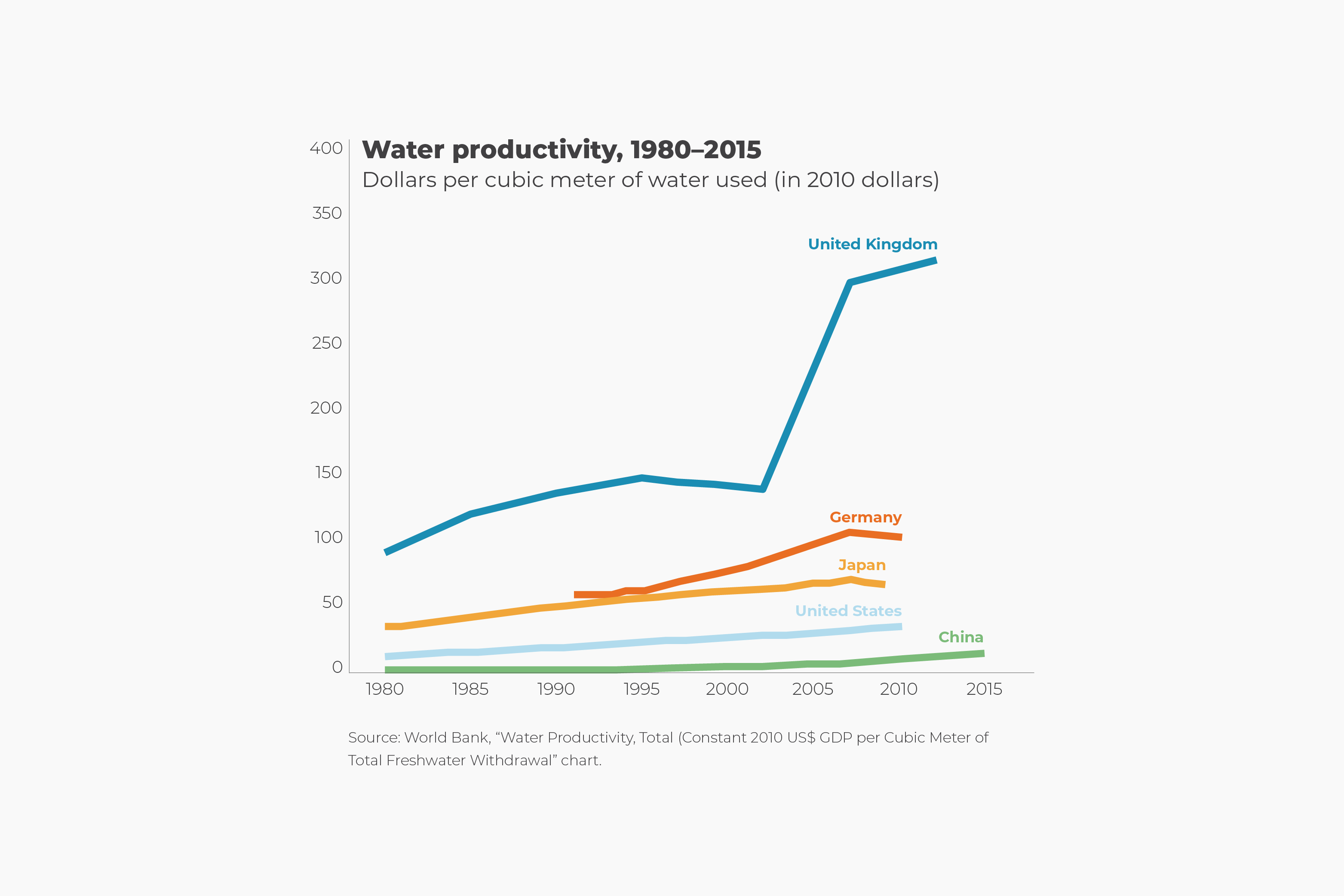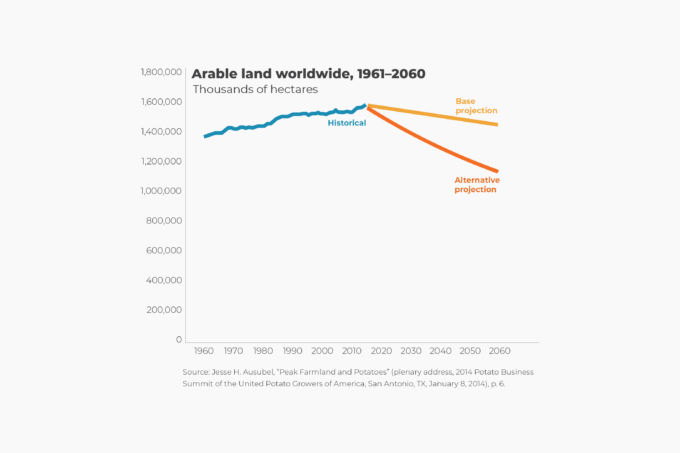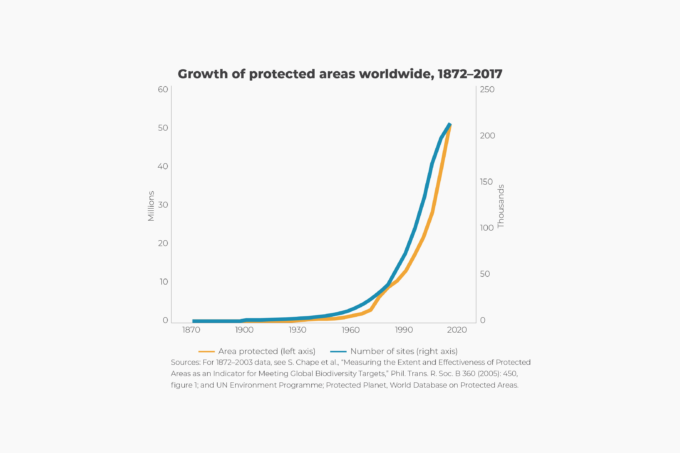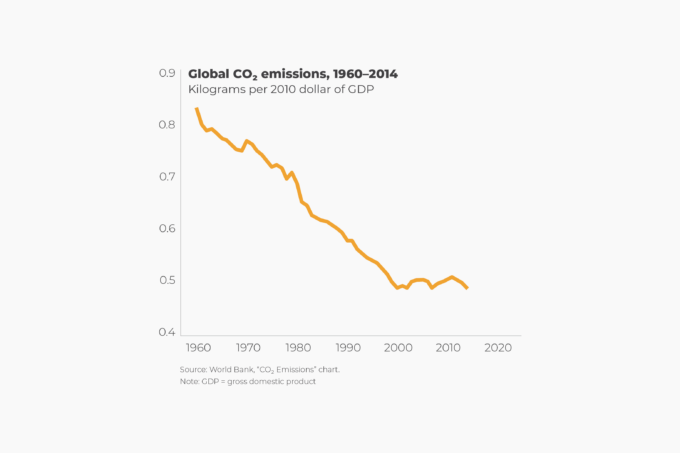Known renewable water reserves per person have declined from 55,270 cubic meters (1.95 million cubic feet) to 19,248 cubic meters (0.68 million cubic feet) between 1962 and 2014. According to the UN Food and Agriculture Organization: “69 percent of the world’s freshwater withdrawals are committed to agriculture. The industrial sector accounts for 19 percent while only 12 percent of water withdrawals are destined for households and municipal use.”
Greater efficiencies in agriculture, therefore, are likely to have the greatest effect on the preservation of freshwater supplies. Luckily, precision agriculture— which combines drip and variable-rate irrigation, Global Positioning System technology, automation, and computer monitoring—can deliver the right amount of water to individual plants, thus limiting waste and runoff. Israel, one of the driest places on Earth, has used technological breakthroughs to become an exporter of agricultural products, including tomatoes, cucumbers, zucchini, and watermelons.
Israel has also built innovative water treatment systems, which “recapture 86 percent of the water that goes down the drain and use it for irrigation— vastly more than the second-most- efficient country in the world, Spain, which recycles 19 percent.” Another Israeli innovation is a much-improved process of desalination, which makes fresh water consumed by Israeli households 48 percent cheaper than that consumed by the people of Los Angeles. That’s particularly important, considering that oceans cover 71 percent of Earth’s surface. If scientists can combine desalination with environmentally friendly sources of energy, such as solar panels, in a cost-efficient way, freshwater supplies will become limitless.
Finally, it is important to remember that water, like energy, is an input in the process of production. That is to say, water costs money. It is, therefore, in the interest of water-intensive industries to limit their water use. Luckily that is precisely what is happening. Global data are difficult to come by, but consider the five largest economies that together account for more than 50 percent of the world’s economic output.
The World Bank estimates that the United States increased its water productivity—or inflation-adjusted dollars of gross domestic product per cubic meter (i.e., 35.3147 cubic feet) of fresh water withdrawn—from $13 in 1980 to $36 in 2010; China from $0.80 in 1980 to $15 in 2015; Japan from $34 in 1980 to $67 in 2009; Germany from $58 in 1991 to $104 in 2010; and the United Kingdom from $91 in 1980 to $314 in 2012.








